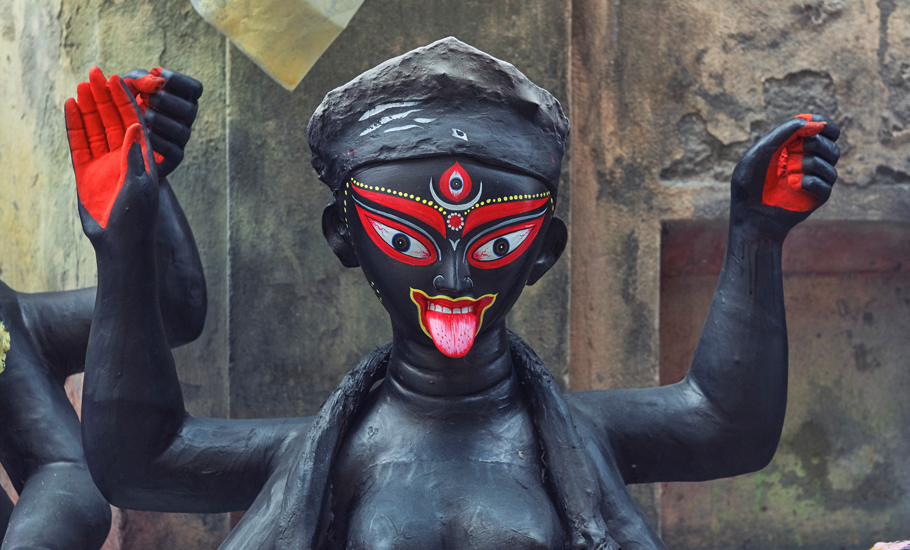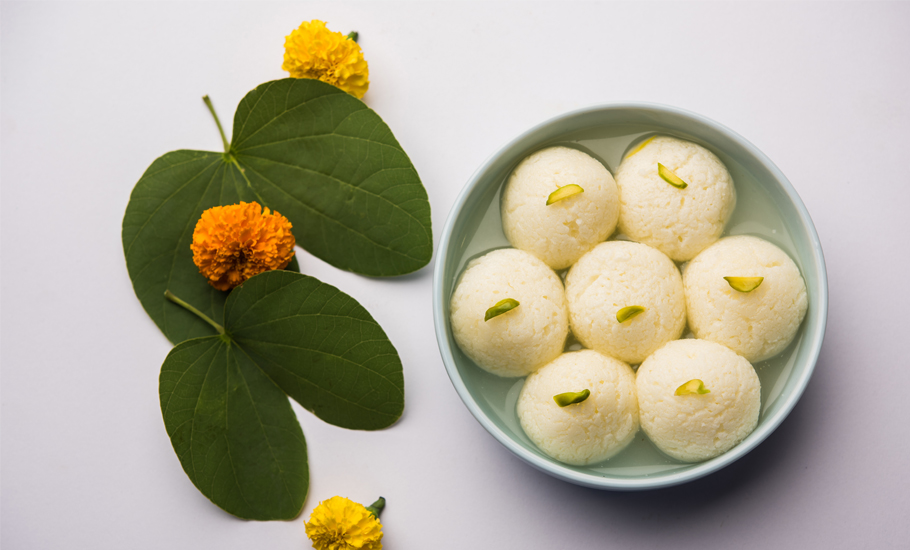
- Home
- News
- Analysis
- States
- Perspective
- Videos
- Education
- Entertainment
- Elections
- Sports
- Features
- Health
- Budget 2024-25
- Business
- Series
- Bishnoi's Men
- NEET TANGLE
- Economy Series
- Earth Day
- Kashmir’s Frozen Turbulence
- India@75
- The legend of Ramjanmabhoomi
- Liberalisation@30
- How to tame a dragon
- Celebrating biodiversity
- Farm Matters
- 50 days of solitude
- Bringing Migrants Home
- Budget 2020
- Jharkhand Votes
- The Federal Investigates
- The Federal Impact
- Vanishing Sand
- Gandhi @ 150
- Andhra Today
- Field report
- Operation Gulmarg
- Pandemic @1 Mn in India
- The Federal Year-End
- The Zero Year
- Premium
- Science
- Brand studio
- Newsletter
- Home
- NewsNews
- Analysis
- StatesStates
- PerspectivePerspective
- VideosVideos
- Entertainment
- ElectionsElections
- Sports
- Features
- BusinessBusiness
- Premium
- Loading...
Premium - India-Canada ties

What 'veg mutton' offering to Kali tells about Bengal's culinary history

Vegetarian mutton! If that sounds incredulous, visit Bengal to savour it during Kali Puja, which coincides with Diwali. Kali, the four-handed, dark-skinned warrior goddess, her naked body covered only with ornate jewellery comprising garlands of demon heads and limbs she has chopped off, is the ultimate embodiment of shakti, the female power, as per the Hindu tantric tradition. Her...
Vegetarian mutton! If that sounds incredulous, visit Bengal to savour it during Kali Puja, which coincides with Diwali.
Kali, the four-handed, dark-skinned warrior goddess, her naked body covered only with ornate jewellery comprising garlands of demon heads and limbs she has chopped off, is the ultimate embodiment of shakti, the female power, as per the Hindu tantric tradition.
Her boundless freedom and escapades on the battlefield have all the trappings that qualify her as the oldest feminist icon. Even her husband, the indomitable Shiva, lies under her feet. She represents the vagaries of nature, both destructive and benevolent.
To invoke her, she needs to be served meat and alcohol. Again, if that sounds debauchery to self-proclaimed purists – who cried doom after an American brewery company, Burnside Brewing Company, named its beer after the goddess – Kali cares a hang.
In Hindu scripture Shiva Purana, also called tamasika-Puraṇa, it is recommended that if one wants to eat flesh, then a goat can be sacrificed before goddess Kali. Even today, goat sacrifice is prevalent in Kali temples in many parts of Bengal and other eastern states such as Assam, Tripura and Odisha.
Places where goats are not sacrificed, cooked meat is served to the goddess as ‘bhog’ offerings.
This “blessed meat” or “proshadi mangsho” as it is called in Bangla is cooked without onions and garlic. For this preparation, the meat is marinated with ginger, cumin seeds and a mandatory ingredient asafoetida (hing). These days, even curd and an aromatic mixture of spices (garam masala) are used. It tastes divine to say the least.
“Onions and garlic, according to Hindu diet code, are tamasic foods (the opposite of sattvic – vegetarian diet that’s based on Ayurvedic principles), which increase heat and passion in the human body and hence are not used in food offered to goddesses,” says Sridhar Mishra of Paschim Banga Rajya Sanatan Brahman Trust.
Strangely, in the Bengali gastronomic psyche, fish and meats are regarded as less tamasic than onions and garlic. Thus, it is not surprising that even Brahmins in Bengal devour meat and fish in sharp contrast to their counterparts in most parts of India.
Puranas, purity and permission
To satiate their gastronomic pleasure, Bengali Brahmins claim that a thirteenth-century Hindu text Brihad-dharma Puranas gave them the sanction to eat fish.
Even most Bengali Hindu monks and saints, including Swami Vivekananda and his guru Ramakrishna Paramahamsa, were non-vegetarians.

The community’s love for the non-vegetarian delicacies did not even change when Vaishnavism was spread in Bengal by the 15th-century saint Chaitanya Mahaprabhu. To circumvent vegetarianism propagated by him, many Vaishnavs went to the extent of arguing the fish is actually a plant and started referring to it as jal taru (a watery plant).
Needless to say who won the argument. According to a data released by the Register General of India in 2016, a whopping 98.55 per cent people in Bengal are non-vegetarian.
It is perhaps only in Bengal that one will find many Vaishnavas eating fish and yet calling them vegetarian. Of course, they don’t put the forbidden onions and garlic in their fish preparations to qualify them as vegetarian.
The same logic, no matter how absurd it may sound, is applied to ‘niramish mangsho’ (vegetarian meat). Since the curry offered to the deity is cooked sans alliums – onions, garlic, leeks, shallots and scallions – it is elevated to the sacred status to earn the oxymoron.
From early Bengali religious texts such as Puranas and Mangal Kavyas it is evident that fish-obsessed Bengalis were equally gluttonous in partaking wide-range of meats. These include goats, deer, ducks, pigeons and other small birds and turtles and even hedgehogs. There are also innumerable references of buffalos being sacrificed before goddess Durga or Kali in religious texts of the region.
In Narayan Deb’s Manasamangal, composed in the late 15th century it is mentioned that at the wedding of Behula, a folk heroine and a protagonist in the Shiva Purana, 12 types of fish and five varieties of meat were cooked.
But in the Bengali culinary culture of that time, garlic and onions were taboo. The alliums entered the Bengali kitchen only in the 18th century, thanks to the influence of Mughal culture in the Bengali food habits.
For centuries prior to that, Bengali caste Hindus resisted the influence of Islam in their kitchens shunning onions, garlic, chicken, chicken egg and other items that were perceived as ‘Muslim food’. This, despite the fact that the region had come under Muslim rule in the early 13th century following the conquest of Nadia by Turkish army led by Ikhtiyar al-Din Muhammad bin Bakhtiyar Khalji.
It was only in the 18th century that Bengalis started experimenting with their taste buds initiating some important changes in their food habits. Meat cooked in Mughlai style with onions, garlic and other rich spices soon replaced the traditional less-piquant variant. One such preparation called mutton kosha became a particular favourite to assume almost an iconic status. So much so that today no Bengali non-veg thali (spread) in any upscale restaurant is ever complete without the serving of the dish.
The evolving palate
It is during this period that the bhadralok, who would play a decisive role in Bengali society and culture from the 19th century, started taking shape, points out Dr Somshankar Ray who teaches History at Vidyasagar College for Women, Kolkata.
It was this class, mostly comprising Hindu zamindars and officials of Muslim rulers, who started cultivating the cosmopolitan culture.
“Also, Shakti worship, a typical feature of the Bengali Hindus, started becoming popular around this time. All these developments influenced the shaping of the culinary culture in pre-modern Bengal,” says Ray.
Apart from Mughals, Portuguese too have profoundly influenced Bengali cuisines, particularly the confectionaries. Making of sweetmeats such as the rosogolla and sandesh, which have become almost synonymous with Bengalis, would not have been possible without the influence of Portuguese pirates, who frequently raided the long coastline of Bengal.
They are said to have taught Bengalis the art of making chhana or cottage cheese, the main ingredient for making rosogolla, sandesh, chamcham and other popular Bengali sweets. As curdling of milk to make cottage cheese was considered inauspicious by Bengali Hindus, the technique was never used in making confectionaries – that is until the pirates came calling to plunder the riches of Bengal.
According to eminent food historian KT Achaya, the Portuguese “loved cottage cheese, which was made by breaking milk with acidic materials”.
“This routine technique may have lifted the Aryan taboo on deliberate milk curdling and given the traditional Bengali moira [confectioner] a new material to work with,” Achaya says.
The Bengali confectionery further evolved in the 18th century following the growth of cosmopolitan urban centres such as Murshidabad, Bardhaman, Bishnupur and Krishnanagar in western Bengal, and Dhaka and Natore in eastern Bengal.
The much-venerated rosogolla was invented by Nabin Chandra Das in his small shop in Baghbazar in Kolkata in the latter part of 19th century. His son Krishna Chandra Das was credited with ‘inventing’ the rosomalai (a milk-based dessert) in the mid-20th century.

Sweets in Bengali cuisine are so prominent that many historians claim that ancient Bengal derived its name “Gour Banga” from the term “gur” (jaggery) – something that was produced in abundance in the region.
The different varieties of early Bengali sweetmeats included pancakes, locally called ‘pithe’, made from rice flour, jaggery, kheer, coconut and dried milk, according to Manasa Bijoy written by 15th-century Bengali poet Bipradas Pipilai.
All this and, most importantly, the evolving Bengali palate are what make the state a melting pot of culture – the piping hot curry of assimilation ready to be served to one and all.
(The story first appeared on The Federal on November 5, 2021.)

